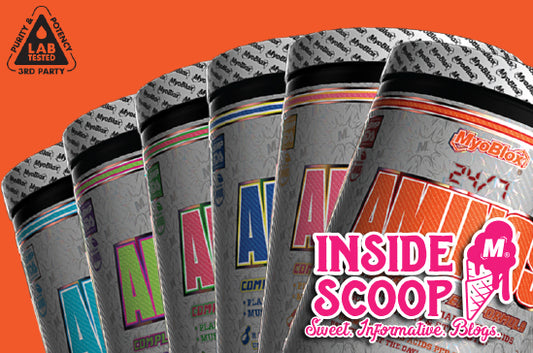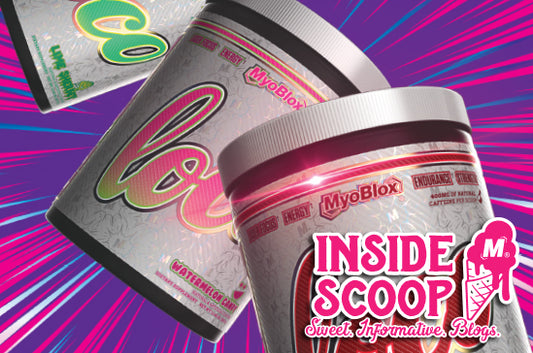
JUST THE FACTS: BETA-ALANINE
Beta Alanine: Just the facts
Beta alanine is ubiquitous in pre-workout supplements, but most people really don’t understand how it works or why they should take it. This article will answer those questions, as well as separate fact from fiction.
Beta alanine is an amino acid that is naturally synthesized in the body. It is one half of the dipeptide molecule carnosine(β-alanylhistidine), which also contains the amino acid L-histidine. The importance of histidine and therefore carnosine is to help regulate pH levels in the blood/muscles, especially during times of exercise. Histidine contains what in chemistry is referred to as an imidazole group, which is a fancy way of saying a 5-membered ring containing 2 nitrogen atoms. One of these nitrogen atoms can act as a base and bond with acid protons that are released during exercise from lactic acid production. This nitrogen can do this at physiological pH (7.3-7.4), which is important as many other nitrogen atoms cannot.1 This allows carnosine to act as one of the body’s natural buffering systems to help maintain pH levels. Having elevated levels of acidic protons like the ones from lactic acid can cause muscle damage, as well as mineral depletion from bones.2 To summarize, beta alanine plus histidine forms carnosine in the cell, which can bind with acidic protons from lactic acid to help protect muscles from damage.
So, if the imidazole ring is on histidine and not beta alanine, then why not just supplement with L-histidine, or even one step further and just ingest carnosine? Good question. This was studied, and the results were very conclusive. Supplementation with L-histidine did not elevate intramuscular levels of carnosine. From this, it was concluded that beta alanine was the limiting factor in carnosine synthesis. But, what about taking carnosine? The same study looked at this scenario as well and concluded that carnosine did not elevate intramuscular levels of carnosine. It was hypothesized that since carnosine is a peptide(2 amino acids chemically bonded), it could not enter the cell as one peptide and instead is formed inside the cell via the enzyme carnosine synthetase.3 To summarize, only supplementing with beta alanine has been shown to elevate intramuscular carnosine levels, not L-histidine or carnosine.
Why is beta alanine important to take when you train? Well, as I mentioned earlier, when you train hard for long periods of time, one of the by-products is lactic acid.4 Lactic acid gives off an acidic proton, which can decrease the pH of your muscles and/or blood (if too great). Carnosine can bind with the acidic protons and help eliminate the negative effects. The carnosine buffering system is about 10% of your body’s natural buffers, and up to 45% of your total buffering ability in type II muscle fibers.5 Supplementing with beta alanine has been shown to increase total carnosine levels by up to 40% after 4 weeks. As a result, subjects were able to train longer via increasing buffering capacity in muscle cells.6 To summarize, beta alanine can significantly increase intramuscular carnosine levels, which allows you to train longer.
There is a lot of misinformation about how to dose beta alanine. Some products claim the clinical dose is 3.2g. This dose is actually derived from a study using a daily dose of 6.4g, taken as 1600mg 4 times a day. This dose was chosen because there is a saturation point that needs to occur before your carnosine levels are significantly increased. That saturation point is 179g, reached by taking 6.4g a day for 28 days.7 At this dosing protocol, carnosine levels were increased by up to 40%.
What about the tingling? Well, the “tingling” is clinically known as paresthesia and occurs from beta alanine or a metabolite of interacting with a receptor known as MrgprD. This receptor is located on your nerve endings of pruriceptive neurons near the top of your skin and thus cause an uncomfortable “pins and needles” or burning sensation. This has subsided in all subjects after an hour or less and HAS NOTHING to do with the ergogenic effects of beta alanine.
Loco® by MyoBlox® contains 5g of beta alanine per full dose which can allow you to reach your saturation point and elevate carnosine levels more quickly than most products that contain at maximum 3.2g. The benefits of increasing carnosine levels include training harder and longer than without it and buffering your body against the deleterious effects of high levels of acidic protons and lactic acid build-up. For more information on Loco®, please check out the product page here.
-GC
References:
- Bate-Smith CE. The buffering of muscle in rigor: protein, phosphate and carnosine. J Physiol. 1938;92:336-343.
- Miles, M. P., and P. M. Clarkson. "Exercise-induced muscle pain, soreness, and cramps." The Journal of sports medicine and physical fitness3 (1994): 203-216.
- Dunnett, M., and R. C. Harris. "Influence of oral ß‐alanine and L‐histidine supplementation on the carnosine content of the gluteus medius." Equine veterinary journalS30 (1999): 499-504.
- Westerblad, Hakan, David G. Allen, and Jan Lannergren. "Muscle fatigue: lactic acid or inorganic phosphate the major cause?." Physiology1 (2002): 17-21.
- Harris RC, Tallon MJ, Dunnett M, et al. The absorption of orally supplied beta-alanine and its effect on muscle carnosine synthesis in human vastus lateralis. Amino Acids. 2006;30(3):279-289.
- Bishop D, Edge J, Davis C, Goodman C. Induced metabolic alkalosis affects muscle metabolism and repeated-sprint ability. Med Sci Sports Exerc. 2004;36(5):807-813









1 comment
I enjoyed reading this article. Definitely glad I took the time to understand what I am taking and how it works! Also, Thank you for the references